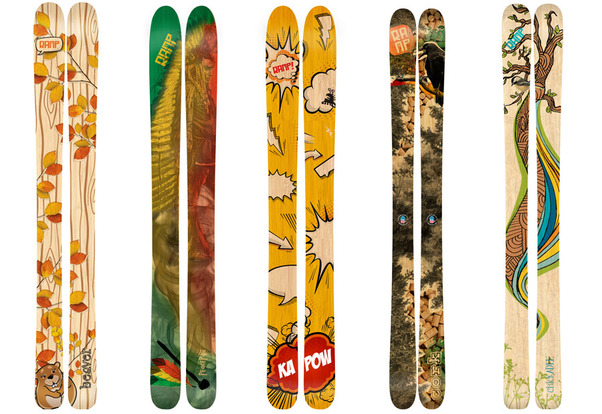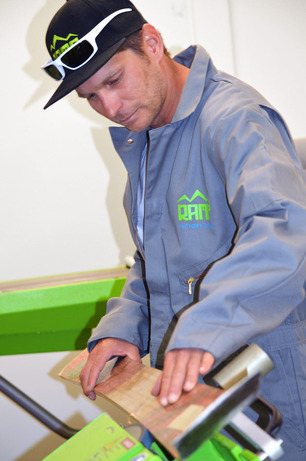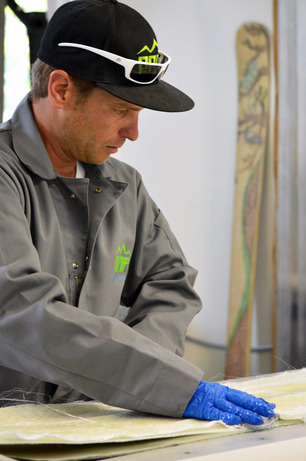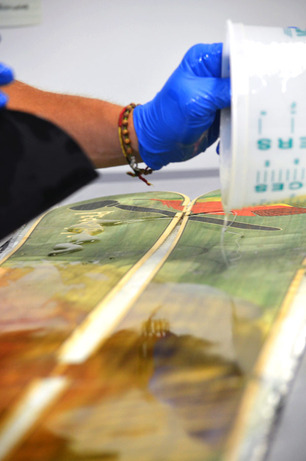RAMP Sports
Rapid prototyping and Kevlar construction underscore a line of handmade skis


Based out of Park City, Utah RAMP Sports (AKA “Riders Artists Musicians Project”) has just released a line of skis using next-generation rapid prototyping and vacuum molding to create their boards. Their modern equipment has allowed them to create unique molds and build prototypes in record time by making small adjustments to a DXF file. For skiers and riders, this means that boards can be fine-tuned and adjusted to suit various predilections—whether that be buttering, jibbing, racing or all-mountain riding.
In spite of the high-tech molding, the remainder of the ski production is done by hand. RAMP also uses a Kevlar layer to complement its bamboo core as opposed to traditional fiberglass, and the decorative top layer is made from graphic-printed bamboo veneers. With a newly minted, American-made ski line ready for Winter 2012-2013, the company also has plans to move snowboard production to Park City for the 2013-2014 season.
Without divulging too much of the patent-pending method, President Michael Kilchenstein indulged our curiosity about the company’s production process.


The notion of rapid prototyping skis seems almost too good to be true. What exactly does it enable you to do?
We are patenting a new process that allows us to change the shape or sidecut of a new ski or snowboard without having to make a new mold. We don’t need a specific mold for every size of every model, so our ability to adapt to testing results and move according to future trends is unique. We can also use any construction in our new process.
How does the end result compare to traditional techniques?
Again this new process is superior to the traditional press molding in many ways. In press molding, there are usually four atmospheres of pressure crushing the layers down against a camber plate. The precision needed to get good lines and camber is usually more than what is possible with the tooling that is done. The skis are also very sensitive to small deviations. In vacuum molding, we use one atmosphere of pressure instead, and the pressure is equal in all directions so nothing is forced into a shape between the contact points. The layers find their natural shape through their various thermal expansion characteristics. We get a virtually perfect line this way and the skis feel like they have a much bigger sweet spot as the layers are in their natural state. We are using vacuum molding for prototyping and production like what is used in modern composite manufacturing such as helicopter blades.


What are some of the advantages of using Kevlar over fiberglass or other materials?
Kevlar is much lighter and stronger than fiberglass—nearly equal to carbon. Carbon is the best if you wanted to make the lightest, stiffest structure possible, but it has poor vibration absorbing characteristics and has a harsh feel on snow. Fiberglass is strong and has good vibration absorbing characteristics but Kevlar is dramatically better, eight times as good at absorbing vibration. When a ski flexes, the bottom layers are being stretched (the outside of the arc) the top layers are being compressed (inside of the arc). Kevlar is very resistant to stretching and provides amazing rebound as a result, this makes it great for things like bullet-proof vests and the bottom layer of a ski.
Images by Carmen May












